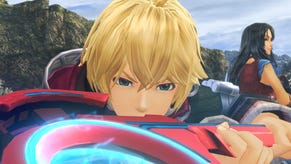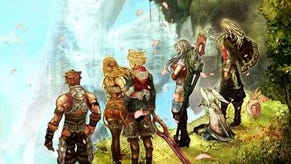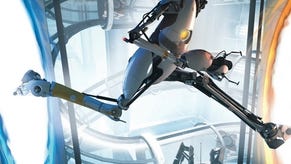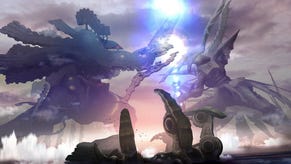Xenoblade Chronicles
Standing on the shoulders of giants.
It's not clear precisely when the Japanese role-playing game crumbled from one of gaming's core pillars to a battered monument to outmoded design. In the wake of Final Fantasy VII's global popularity, this weave of grandiose storytelling, menu-based battling and lavish production values seemed set to dominate the future of interactive entertainment. But as budgets strained ever harder to fill the widening technological boundaries of each new wave of console hardware, publishers took fewer and fewer risks with their money. Creative repetition led to stagnation led to decline.
Today, the release schedules are peppered with remakes and re-releases of seminal 'JRPGs' from the Super Nintendo's golden era and fans are routinely made to look backwards, rarely forwards. On the few occasions that we are treated to a strong fresh release, such as last year's outstanding Dragon Quest IX, that success leans more heavily on familiarity than novelty.
Xenoblade Chronicles is a rare exception. Here is an endlessly lavish, detailed production based in a newborn universe that is not only filled with unfamiliar faces but also brims with daring ideas and mechanics. Indisputably, this Wii game - released in the twilight months of its host console - is the strongest JRPG to emerge in years. Its vision is so bold and assured that it's difficult to imagine how such a creature could have risen from this brackish swamp of a genre.
It helps, of course, that its breeding is impeccable. Director Tetsuya Takahashi's past credits include formative classics such as Secret of Mana and Chrono Trigger. But Takahashi's work hasn't been without its problems. His most famous self-originated project was Xenogears, a game whose aspiration soundly outstripped its budget, while his similarly ambitious Xenosaga limped to a conclusion just three games into an intended series of six. Both alienated as many players as they made fans with their winding, indulgent cut-scenes and overreaching plots.

But with Xenoblade Chronicles, Takahashi demonstrates creative humility as he brings ambition in line with achievability and moves away from that reliance on cut-scene storytelling, which he recently described as a "creative dead-end". Make no mistake, Xenoblade Chronicles carries a grand narrative, played out by a cast of scores; but that plot is expressed as much in the game's mechanics and environment as it is cinematically.
Its world is shaped like a giant colossus. Imagine one of Team Ico's giants had been blown up to a hundred times its original size and frozen in time, before reeds, trees and lakes were allowed to settle on its features. The Bionis, as it is known, is the world upon which you adventure, its 10-mile limbs the walkways and bridges you clamber across. Exploration off the beaten track is encouraged with experience point rewards for every landmark charted - but this is a world that invites wide-eyed surveying. The joy of discovery is reward enough.
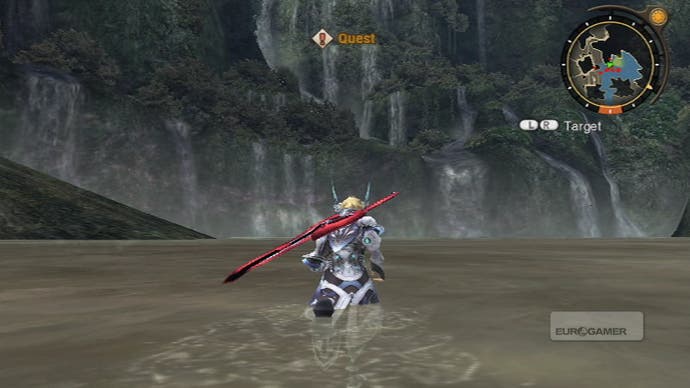
You play as Shulk, an orphan boy with a weighty mystical sword, as per the great JRPG tradition, but mercifully without a chip on his shoulder, in contrast to it. Shulk lives in Colony 9, a tranquil town nestled in a valley on the Bionis' leg, with other members of his race, the Homs. His life consists of amateur archaeology, bug collecting and cowering from the irregular attacks made by the other race that live on the Bionis: steampunk robots known as the Mechon.
When the Colony is attacked by a swarm of Mechon at the start of the game - killing some of the friendly faces you have just become acquainted with and burning the shops whose shelves you've emptied - Shulk sets out with some of his friends to find a way to bring peace to the world.


